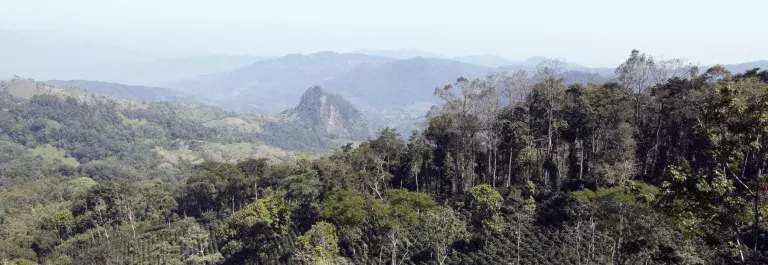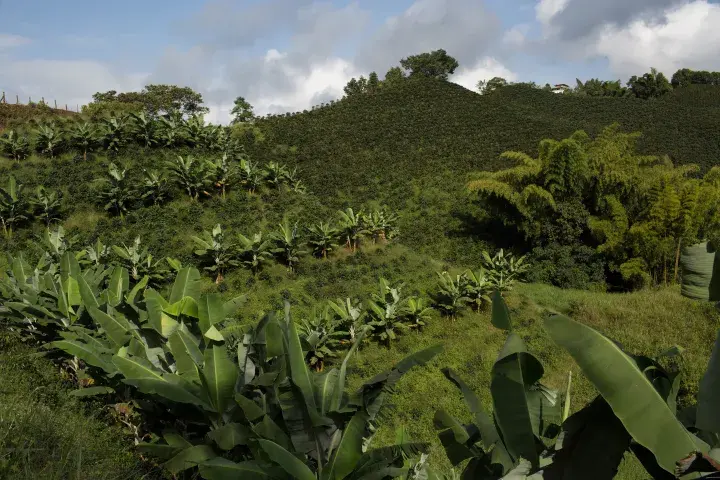What lies behind jurisdictional and landscape claims? ISEAL’s new guidance
While the concept of jurisdictional sustainability continues to gain momentum, the question of how to best monitor and credibly communicate jurisdictional progress remains.
To stimulate discussion, ISEAL produced good practice guidance in 2020 on making credible jurisdictional claims. In 2021, we will continue to explore the topic further in collaboration with our partners.
Scalable solutions
‘Landscape’ and ‘jurisdictional approaches’ are emerging as scalable ways to bring together competing social, economic and environmental goals in a region or area. The term itself is broad, a catch-all for a diversity of efforts reconciling commodity agriculture, other land uses, livelihoods and conservation needs at scale.
Driving interest in these approaches is the consensus that companies cannot deliver their ‘no deforestation’ and ‘no conversion’ commitments without collaboration and coordination with other actors within and beyond their immediate supply chains. Underlying this is an appreciation that addressing biodiversity loss, halting deforestation, and tackling the climate emergency requires collective action and interventions at scale.
The stakes are high and cannot be understated. We have already lost 68 percent of wildlife populations since 1970. And plant extinction is estimated to be more than twice that of mammals, birds, and amphibians combined. Continued deforestation and land conversion contribute to climate change and lessen the resilience of our landscapes, making it harder to stop the global growth of greenhouse gas emissions, and realise the Paris Agreement.
Collective action
Given this urgency, many local and regional governments are working together with companies, civil society, and producers on landscape approaches, to collectively drive action and impact. Such jurisdictional initiatives can bring together relevant actors within a political administrative boundary (including government entities) in a way that enables the co-development of goals and targets, alignment of activities, and a shared approach to monitoring and verification on outcomes and impacts.
Bringing actors together to support change within a landscape or region comes with a range of potential benefits. For governmental entities, such initiatives can create external incentives for more sustainable practices including REDD+ finance, external investment, ecological fiscal transfers and reputational benefits.
Company engagement
Companies can engage with these multi-stakeholder platforms in a variety of different ways - supporting their development, investing in the capacity of NGOs, producers and governments, and incentivising suppliers to engage through preferential sourcing.
Many of these opportunities hinge on the ability of these initiatives to conduct robust performance monitoring and verification. Currently, a lack of consistent, reliable information about these approaches and their potential outcomes hampers company appetite for involvement and limits external performance-based investment.
Consistency in monitoring and verification approaches remains a challenge that directly impacts the types of claims jurisdictional initiatives and companies can make: whether those relate to ‘zero deforestation’ or other sustainability goals.
A number of global frameworks and tools are being developed and tested to solve this, including LandScale, SourceUp, the SAN Blueprint, and the Commodities/Jurisdictions Approach. However, currently there is no wider agreement on what exactly to monitor and how to balance local goal setting with global priorities.
In addition, questions on how monitoring should be undertaken and to what extent verification of data is needed, are important. Recognising these challenges and the opportunity for learning and alignment across initiatives, ISEAL has developed good practice guidance on Making Credible Jurisdictional Claims.
ISEAL good practice guide
The guidance serves as a straw model to stimulate discussion and alignment about what practices need to be in place to ensure credible monitoring, verification and claims at a jurisdictional scale. Developed through an extensive public consultation, it recognises that while stakeholders may be primarily interested in the improvements in sustainability performance that a jurisdiction has made (e.g. reduced rates of deforestation, lower carbon emissions, economic livelihoods etc), there are also meaningful outcomes related to the implementation of a credible jurisdictional initiative that sets goals, aligns actions and monitors progress.
The guidance also explores what should underpin the supporting action claims that producing companies, sourcing companies, investors and other market-based actors may seek to make about what they are doing to support jurisdictional initiatives.
Such claims can relate to engaging with a jurisdictional initiative, contributing to the sustainability goals or outcomes of the initiative, or attributing their actions to resulting progress in a jurisdiction. Agreement on what is needed to underpin such claims will be pivotal to driving private sector action with these initiatives.
Ongoing challenges
While our guidance aims to support the development of jurisdictional approaches and link them to markets, we recognise that more is yet to be done. Our consultation flagged various issues and challenges that will need to be addressed. Some are technical in nature, such as identifying how to approach data gaps, the availability of data across jurisdictions, ensuring quality and data aggregation. Others relate to claims management – what should be in place to address spurious or misleading claims, and what level of verification is needed to support these claims.
In 2021, we’ll explore some of these themes further through an extended dialogue process, including through a series of webinars and virtual workshops to gather your thoughts and input.
We will also pilot our guidance with several jurisdictional entities, exploring how we can strengthen our understanding of what ‘good practice’ looks like in concrete and operational terms.
If you are interested in following our work and engaging with us, please visit our web page or contact us at landscapes@isealalliance.org


